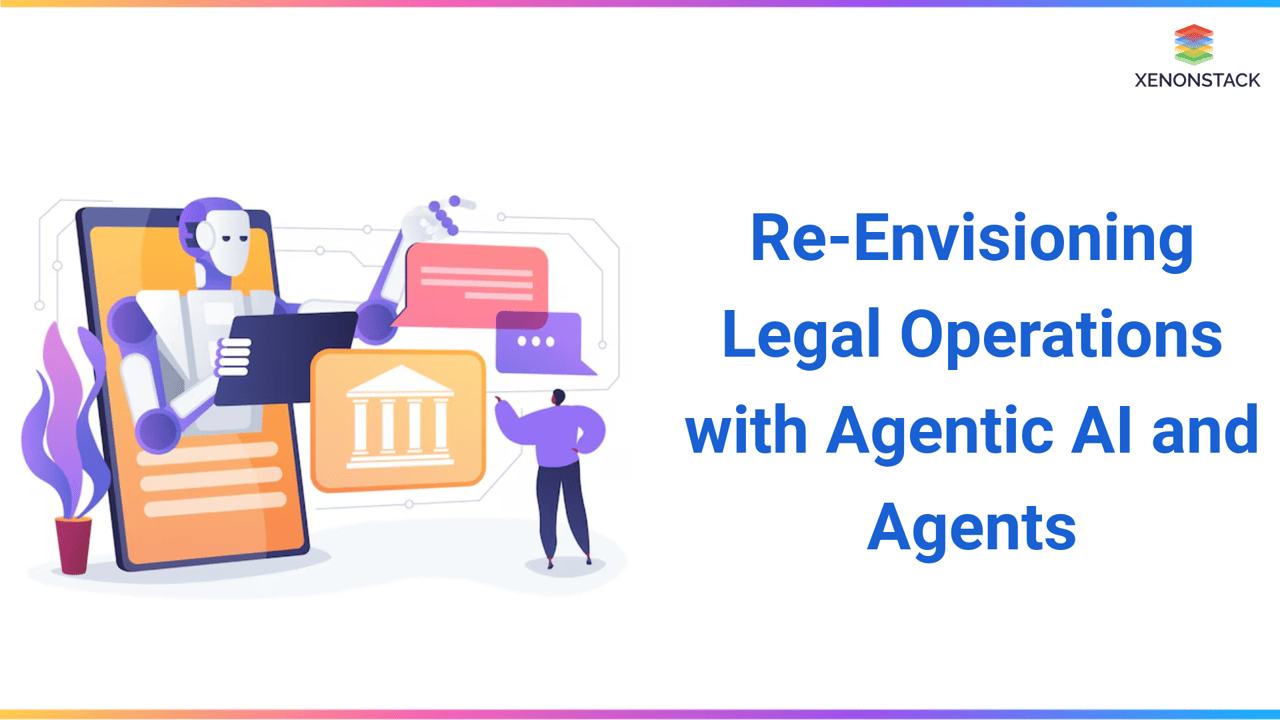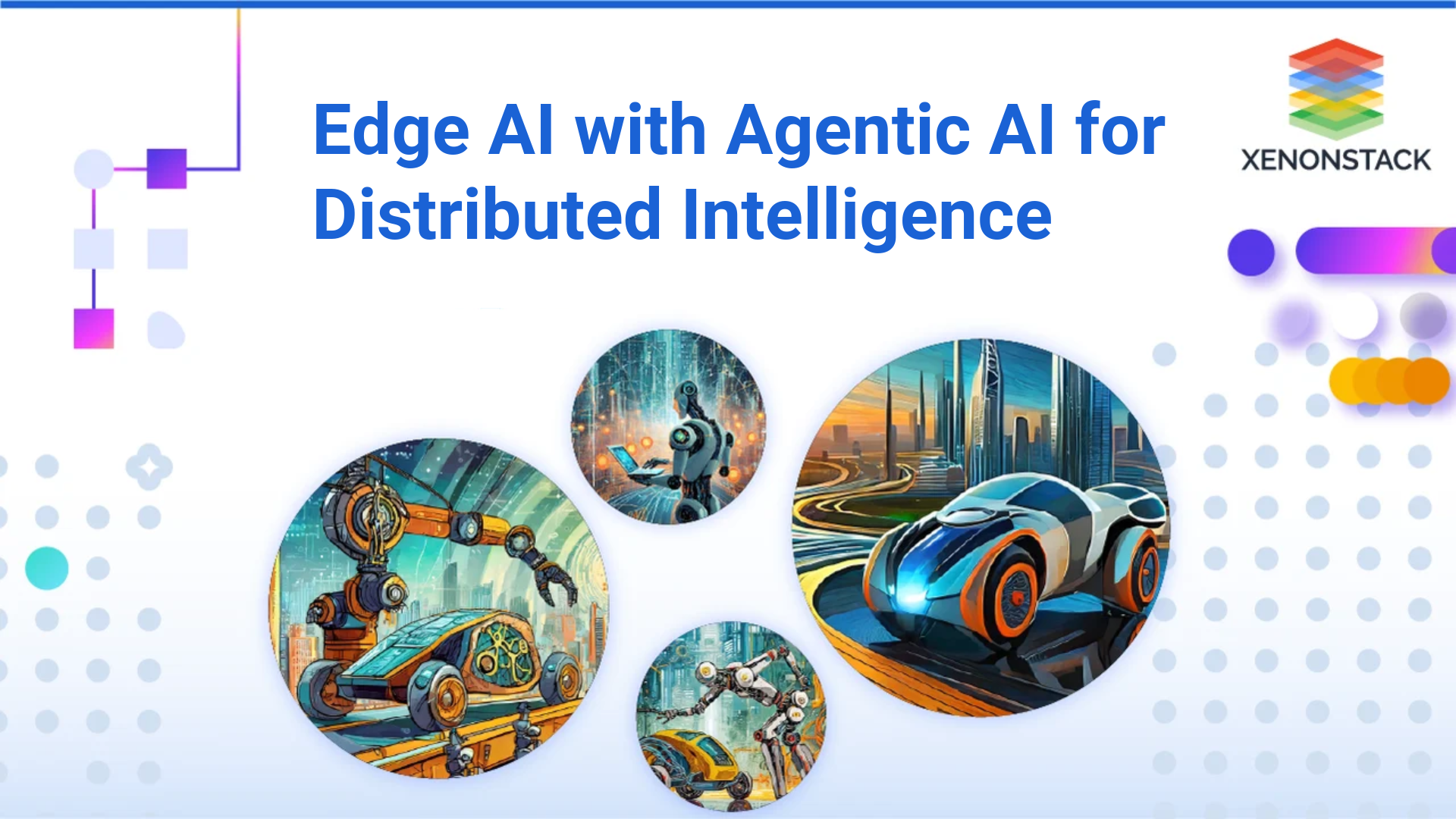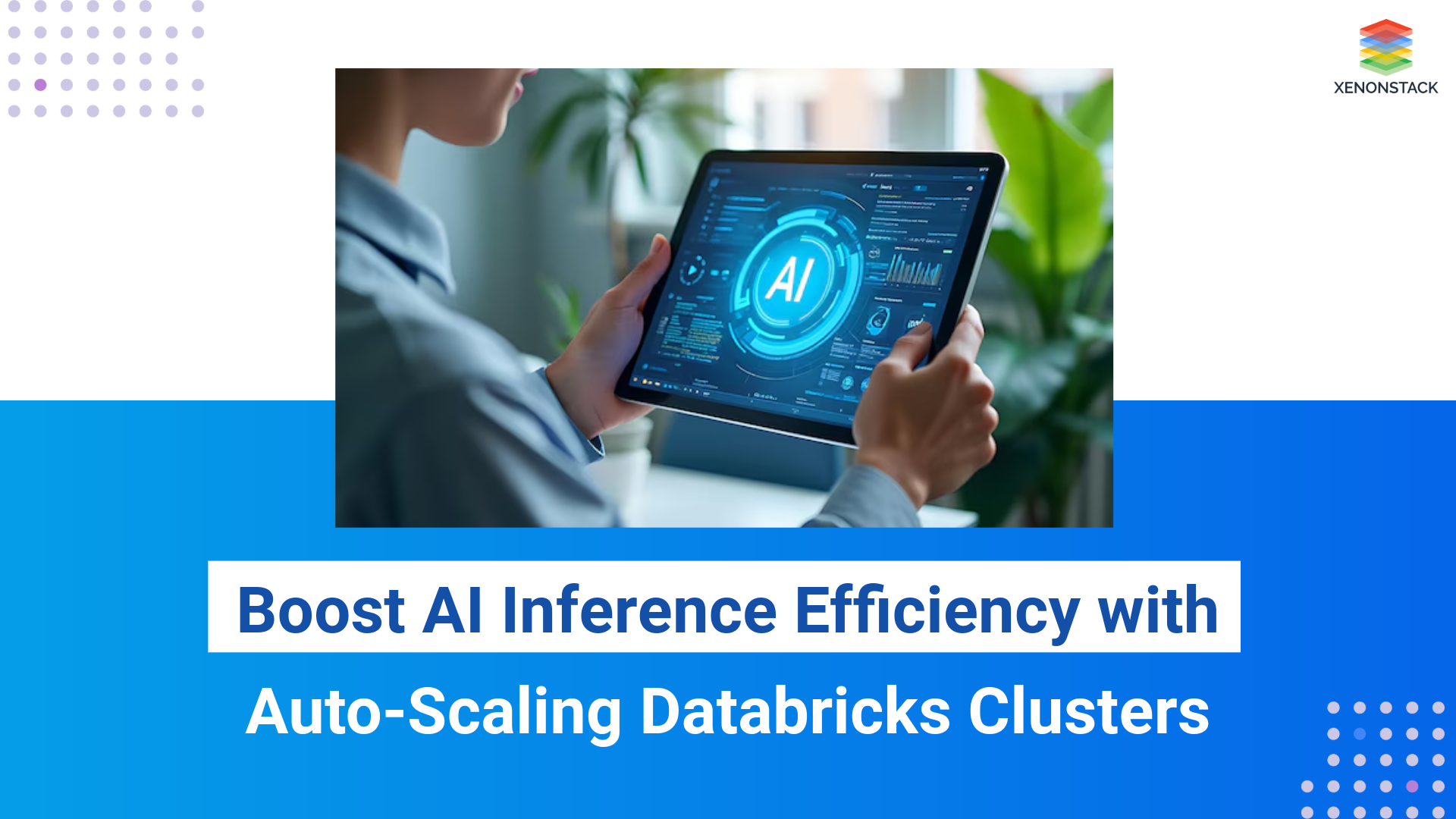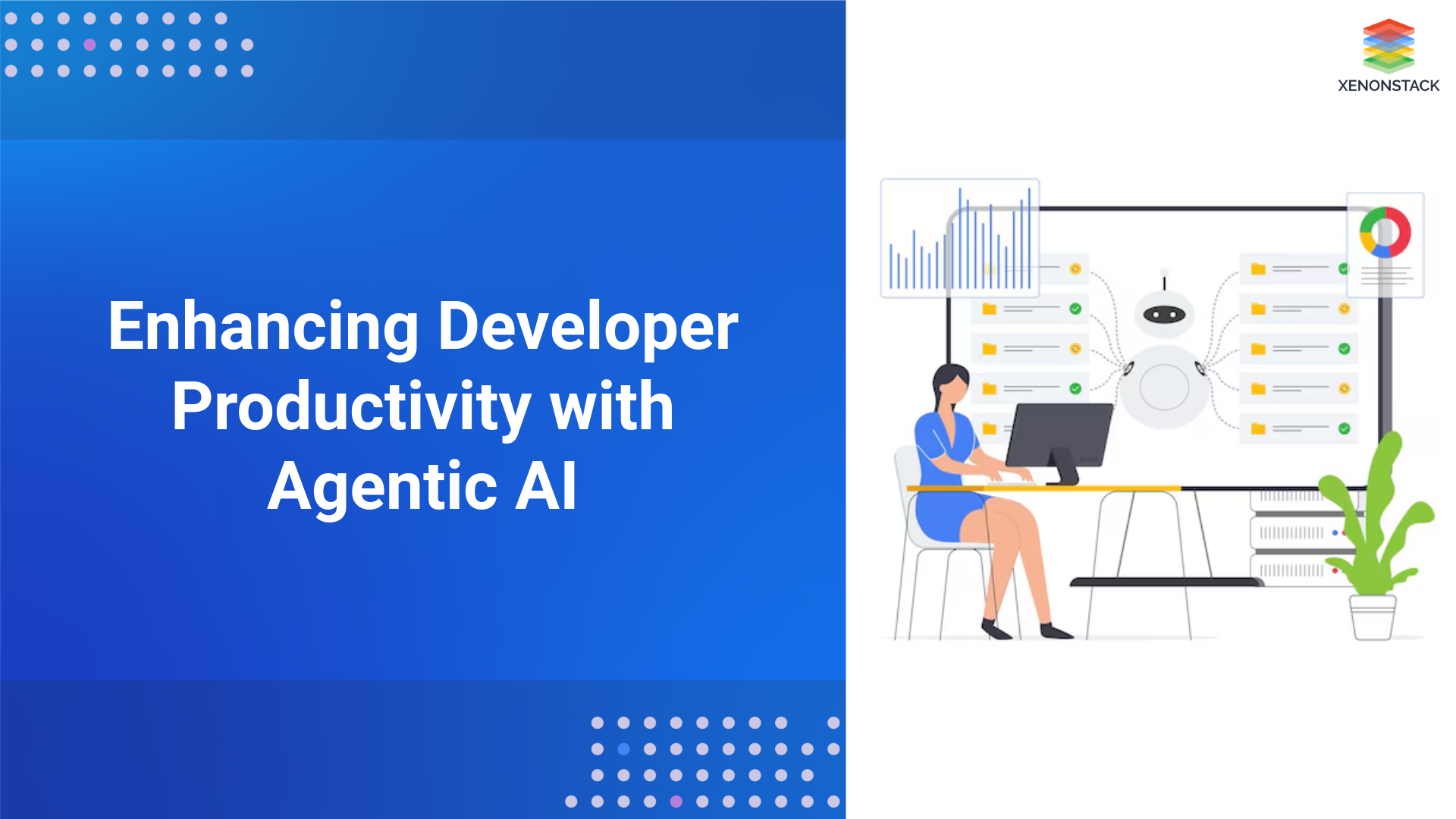
In today’s dynamic regulatory and business environment, law firms and legal departments are pressured to streamline operations, enhance compliance, and deliver faster legal insights. Enter Agentic AI — a new paradigm that combines autonomous, goal-driven AI agents with the cognitive reasoning needed for legal workflows.
Agentic AI is not just automation. It’s an evolution. One where AI agents can independently analyze cases, prepare contracts, assist in legal research, and proactively surface risks — while collaborating with human lawyers as intelligent assistants.
A recent report indicates that the Generative AI market in the legal industry is projected to expand to approximately 675.1 million dollars by 2032. This growth is anticipated to occur at a compound annual growth rate (CAGR) of 30.7% from 2023 to 2032.
What Are AI Agents in Legal Services?
AI agents in legal services are intelligent, autonomous systems that perform legal tasks with minimal human intervention. These agents can understand legal language, analyse documents, track regulatory changes, conduct legal research, and provide strategic recommendations — all based on predefined goals and continuous learning.
They are designed to:
-
Act independently to complete tasks like contract analysis or compliance checks
-
Learn and adapt based on new legal data, case laws, or organizational needs
-
Collaborate with legal teams by offering real-time insights and contextual suggestions
-
Support decision-making through data-driven evaluations of risks, obligations, and opportunities.
By integrating legal knowledge with advanced reasoning capabilities, AI agents streamline legal operations, enhance accuracy, and deliver faster outcomes for legal professionals and their clients.
Key Concepts of Legal Services
These are the fundamental principles that shape how legal services are structured, delivered, and regulated:
Rule of Law: Ensures that laws are applied equally, fairly, and consistently to all individuals and organizations.
Legal Rights and Obligations: Defines what entities are entitled to and responsible for under civil, criminal, and regulatory frameworks.
Due Process: Guarantees fair legal procedures and protections during any legal action or investigation.
Legal Interpretation and Precedent: Involves interpreting statutes and applying past judicial decisions to current cases, ensuring consistency and predictability.
These concepts form the foundation of legal practice and decision-making — and are essential for building and applying technologies like AI agents in a compliant, ethical, and effective manner.
Traditional Way of Legal Operations
Legal departments and law firms have long relied on manual, document-heavy processes that are often siloed, reactive, and time-intensive. These conventional methods include:
-
Manual Contract Review: Lawyers or paralegals meticulously review contracts line by line to identify clauses, obligations, and risks. This process is labour-intensive and prone to human error — especially when dealing with high volumes of documents or complex legal language.
-
Time-Consuming Legal Research: Legal professionals traditionally conduct research by manually searching multiple databases, law libraries, and case law repositories. Finding the most relevant and updated information can take hours or even days, impacting response time and decision-making speed.
-
Isolated Compliance Monitoring: Compliance teams often track regulatory updates manually through newsletters, government websites, or third-party alerts. There is limited integration between compliance data and business systems, leading to delays in adapting to new rules and increased risk of non-compliance.
-
Linear Workflows: Legal operations typically follow rigid, step-by-step workflows with little room for flexibility or automation. Tasks such as case intake, document approval, and client communication are handled sequentially, resulting in bottlenecks and delayed turnarounds.
-
Document-Centric Approaches: Traditional legal practices rely heavily on static templates, printed documents, and email exchanges. Digital collaboration tools are minimally used, hindering real-time communication, version control, and centralized knowledge sharing.
This traditional setup, while thorough, often lacks scalability, agility, and efficiency, creating a strong case for transformation through intelligent technologies like AI agents.
Impact on Customers Due to Traditional Legal Approaches
Outdated legal operations directly affect the client experience and business outcomes. The lack of automation, integration, and real-time intelligence results in several pain points for customers:
-
Delayed Turnaround Times: Manual contract reviews, slow legal research, and rigid approval workflows often extend the time it takes to deliver legal opinions, finalize agreements, or respond to compliance inquiries. This lag can delay business decisions, transactions, or product launches, impacting overall agility and competitiveness.
-
Higher Legal Costs: Labor-intensive processes mean more billable hours from attorneys and paralegals. Clients end up paying premium fees for routine tasks such as document review, regulatory tracking, or legal drafting — all of which could be streamlined with technology. This drives up the total cost of legal services.
-
Increased Risk Exposure: Without real-time compliance monitoring or automated contract intelligence, there's a higher likelihood of missing critical regulatory updates, deadlines, or risky clauses. This can lead to legal disputes, financial penalties, or reputational damage — especially in heavily regulated industries like finance, healthcare, or energy.
-
Lower Client Satisfaction: Today’s clients expect speed, accuracy, and transparency — all delivered through digital channels. Traditional legal processes that rely on paper trails, slow email communication, and delayed updates fall short of these expectations. As a result, client trust and loyalty can suffer.
Solution: AI Agents to Analyze Legal Operations at Various Levels
Agentic AI in legal services is built around a multi-agent architecture, where each agent performs a specialized function while working collaboratively under the direction of a central controller. This structure ensures efficient, real-time, and context-aware legal service delivery.
 Fig: Architecture Diagram of Legal Services
Fig: Architecture Diagram of Legal Services
1. Data Sources
These foundational inputs feed the AI agents with real-time, relevant information. Examples include:
-
Case Management Systems: Store active and past case files, court dates, and proceedings.
-
Legal Research Databases: Provide access to statutes, case law, and scholarly articles.
-
Client Communication Platforms: Email, chat logs, and CRMs that capture client queries and feedback.
-
Document Repositories: Legal contracts, compliance documents, NDAs, and more stored in cloud-based or on-prem systems.
These sources act as the raw material for agents to analyze, process, and respond to legal tasks.
2. Master Orchestrator Agent
This is the central intelligence or coordinator of the multi-agent system. It performs several key roles:
-
Task Delegation: Assigns tasks to the appropriate specialized agents based on the incoming request or legal operation.
-
Data Aggregation: Collects and compiles insights from all agents to form a unified, actionable response.
-
Workflow Optimization: Ensures tasks are executed in the right sequence, reducing delays and redundancy.
Think of it as the project manager that ensures all other agents work cohesively and efficiently.
3. Specialized AI Agents
Each of these agents is fine-tuned for a specific legal function:
-
Research Agent
Uses natural language processing (NLP) and legal knowledge graphs to search, analyze, and summarize relevant case laws, precedents, and statutes — saving hours of manual legal research. -
Document Review Agent
Scans contracts, legal notices, and compliance forms to highlight key clauses, identify risky or missing provisions, and suggest improvements. It ensures legal documents are error-free and compliant. -
Compliance Agent
Continuously monitors updates from regulatory bodies (e.g., GDPR, HIPAA, SOX) and checks whether internal policies and client documents remain aligned with current legal standards. -
Client Interaction Agent
Manages communications such as intake forms, client Q&A, or feedback collection. It can schedule appointments, provide case updates, and even translate legal jargon into client-friendly language. -
Analytics Agent
Tracks key performance indicators like case turnaround time, win/loss ratios, compliance scores, and client satisfaction. It provides strategic insights to improve legal service delivery and operational efficiency.
4. Final Output: Legal Service Optimization
The combined efforts of these agents — managed by the Master Orchestrator — result in:
-
Faster legal responses and document handling
-
Higher compliance accuracy and reduced legal risks
-
Improved client experience through responsive communication
-
Strategic legal planning backed by performance data
This agent-based system turns legal operations from reactive and manual into proactive, intelligent, and scalable services.
Benefits of Agentic AI in Legal Services
|
Area |
Impact |
|
Productivity |
40–70% reduction in manual effort — AI agents automate repetitive tasks like contract review, clause tagging, and legal research. This frees legal teams to focus on strategic work and complex problem-solving. |
|
Speed |
Faster turnaround — Contract creation, compliance checks, and legal document processing times are reduced by up to 50%, enabling quicker decision-making and client service delivery. |
|
Cost Savings |
Lower legal spend — Automation reduces the need for extended manual labor and outside counsel involvement. In-house teams handle more with fewer resources. |
|
Risk Reduction |
Proactive compliance and issue detection — AI agents monitor legal updates and flag risks early, helping prevent non-compliance, missed deadlines, or exposure to legal disputes. |
Prominent Technologies in the LegalTech Space
LegalTech has seen rapid adoption of digital tools to streamline traditional processes, improve access to information, and enhance operational efficiency. Here are the leading categories and tools in this space:
1. Document Automation Tools
Examples: HotDocs, ContractExpress
These tools streamline the legal document drafting process by using predefined templates with dynamic fields.
-
How they work: Legal professionals input key information, and the system auto-generates documents like NDAs, contracts, or wills.
-
Impact: Greatly reduces time spent on repetitive drafting tasks, improves accuracy, and ensures consistency in legal language.
2. Legal Research Platforms
Examples: LexisNexis, Westlaw
These platforms provide comprehensive access to legal databases, including statutes, regulations, judicial decisions, and expert commentary.
-
How they help: Lawyers can quickly search for relevant case laws, analyze legal precedents, and prepare for litigation or advisory work.
-
Impact: Enhances the quality and depth of legal insights while reducing research time.
3. eDiscovery Tools
Examples: Relativity, Everlaw
These tools are used primarily in litigation. They process and analyze large volumes of digital content (emails, documents, metadata) to identify relevant legal evidence.
-
Features: Data filtering, keyword search, tagging, and AI-assisted review.
-
Impact: Accelerates litigation prep, reduces manual review burden, and improves accuracy in identifying critical content.
4. Contract Lifecycle Management (CLM) Platforms
Examples: Volody, ContractPodAI
These systems handle the contract's entire lifecycle, from drafting and negotiation to execution, monitoring, and renewal.
-
Capabilities: Clause libraries, version tracking, e-signatures, alerts for renewals/compliance.
-
Impact: Minimizes risk, increases contract visibility, and improves collaboration between legal and business teams.
5. RegTech Tools and Legal Chatbots
-
RegTech: Tools that monitor global regulatory changes and notify legal teams to maintain compliance. Useful for finance, healthcare, and data privacy sectors.
-
Legal Chatbots: AI-powered bots that handle client intake, answer FAQs, and route queries to the right legal professional.
-
Impact: Ensures organizations stay compliant in real-time and reduces the workload of legal staff through automated client interactions.
Applications of Agentic AI in the Legal Industry

Fig 1: Application Of Agentic AI in the Legal Industry
1. Contract Lifecycle Management (CLM)
-
AI agents streamline contract creation, clause extraction, and obligation tracking.
-
Real-time collaboration with sales, finance, and legal teams.
-
Automatically detect missing terms, non-compliance, and renewals.
Example: A procurement agent scans NDAs and purchase agreements for compliance with ESG regulations and alerts the legal team if deviations are found.
2. Legal Research and Case Analysis
-
Agents analyze vast databases like Westlaw, LexisNexis, and court archives.
-
Generate summaries, pull relevant statutes, and even propose arguments.
How It Helps: Reduces time spent by junior associates on research by 60–80%, freeing up time for strategic tasks.
3. Litigation Support and Risk Forecasting
-
Predict legal outcomes using historic case patterns.
-
Provide early warnings for potential liabilities in ongoing matters.
-
Generate visual timelines and legal strategy comparisons.
Why It Matters: Legal departments gain a data-driven edge in disputes, regulatory challenges, or contract breaches.
4. Regulatory Compliance Monitoring
-
AI agents track changes across global compliance databases (e.g., GDPR, HIPAA, CCPA).
-
Auto-update policies and notify relevant departments.
Real-World Application: An AI compliance agent updates internal documentation following changes in EU data laws, ensuring continual readiness for audits.
5. Client and Matter Intake Automation
-
Conversational agents can handle client intake, gather relevant data, and even recommend services based on case type.
-
Enables faster onboarding and better client experience.
How AI Agents Supersede Other Technologies
|
Feature |
Traditional Tools |
AI Agents |
|
Automation |
Rule-based templates and logic |
Understands context and generates dynamic, tailored outputs |
|
Adaptability |
Static and manually updated |
Learns from data and adapts over time |
|
Workflow Integration |
Limited to specific tasks |
Covers entire legal workflows end-to-end |
|
Proactivity |
Waits for user input |
Sends alerts, suggestions, and initiates actions proactively |
|
Autonomy |
Requires manual execution |
Operates independently and makes decisions when needed |
AI agents bring intelligence, adaptability, and independence to the legal ecosystem—closing the gaps left by fragmented traditional tools. They don’t just support legal professionals; they collaborate, evolve, and act alongside them.
Future Outlook: Agentic AI + LegalTech
As LegalTech evolves, the integration of Agentic AI marks a shift from tool-based support to intelligent, autonomous operations. This transformation is set to redefine how legal teams operate and deliver value.
-
Hyper-Personalized Legal Services: AI agents will deliver context-aware legal outputs tailored to each client’s unique situation.
-
Real-Time Compliance Intelligence: Constant regulatory monitoring will ensure instant updates and proactive legal risk management.
-
Autonomous Legal Operations: From document review to reporting, agents will execute entire workflows independently.
-
Human-Agent Collaboration: Legal professionals will guide strategy while agents handle repetitive and operational tasks.
-
Interconnected Legal Ecosystems: AI agents will seamlessly connect with tools and platforms, ensuring synchronized legal processes.
As these capabilities mature, legal departments transition from reactive support units to proactive, insight-driven business enablers. Agentic AI isn’t just enhancing legal tech—it’s defining its next frontier.
Next Steps with Agentic AI for Legal Firms
Talk to our experts about implementing Agentic AI systems and how legal firms are leveraging Decision Intelligence to become more decision-centric. Harness the power of Agentic AI to automate and optimize legal operations and IT support, enhancing efficiency, accuracy, and responsiveness




